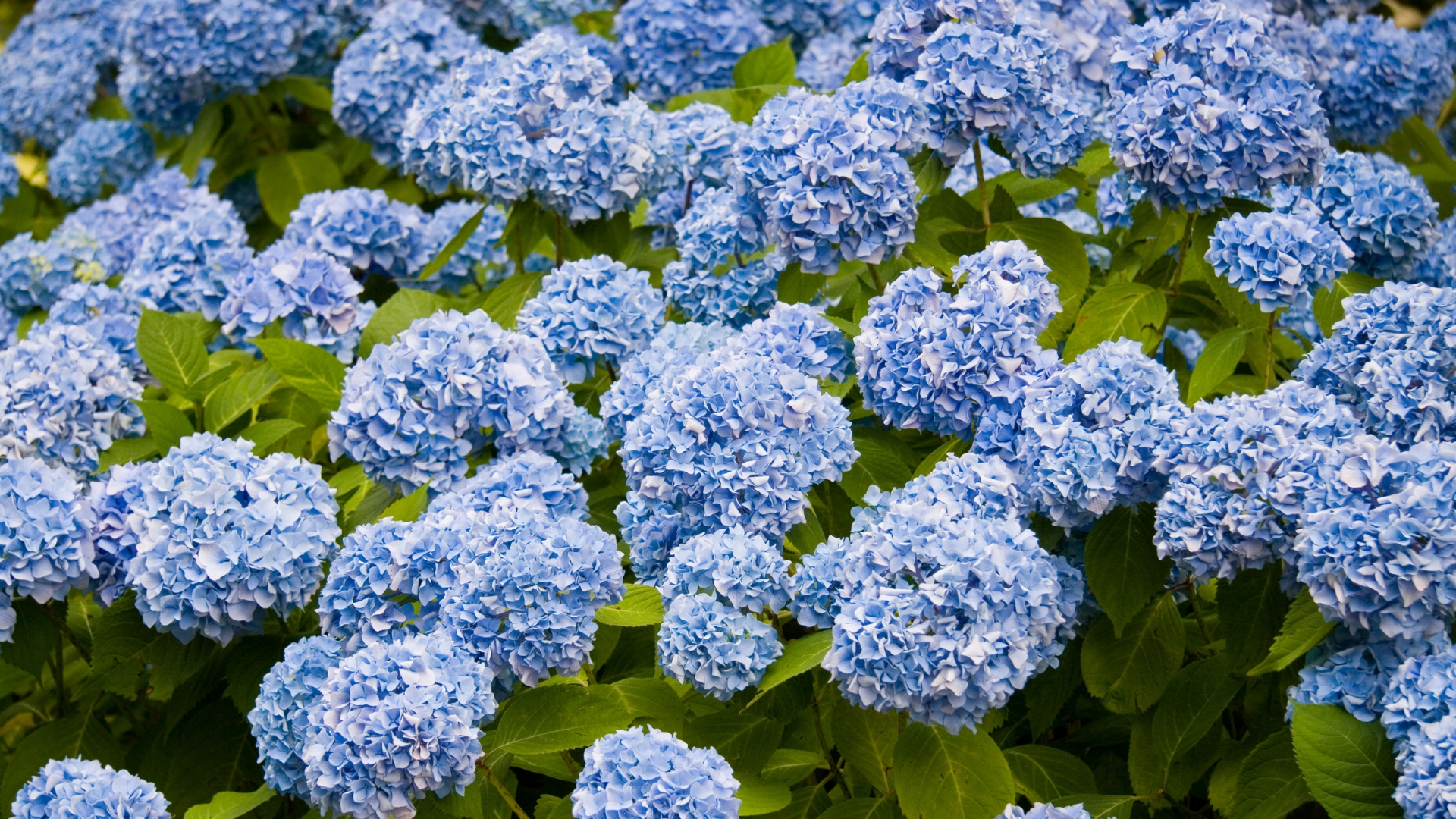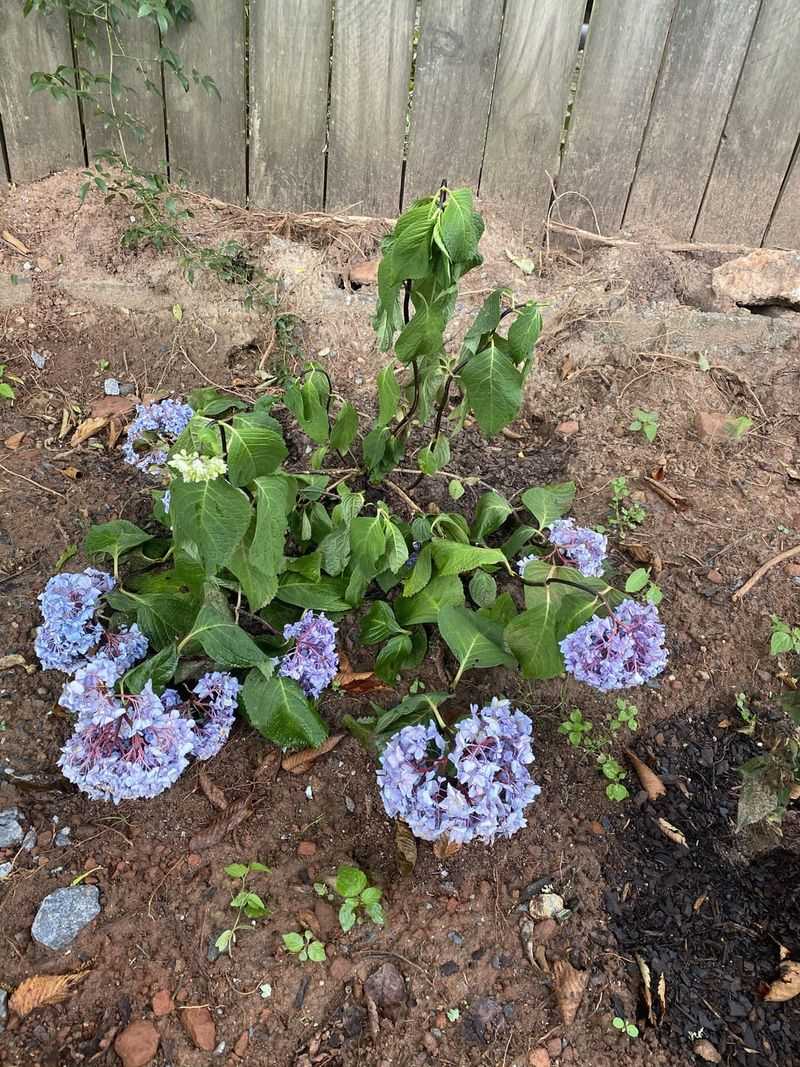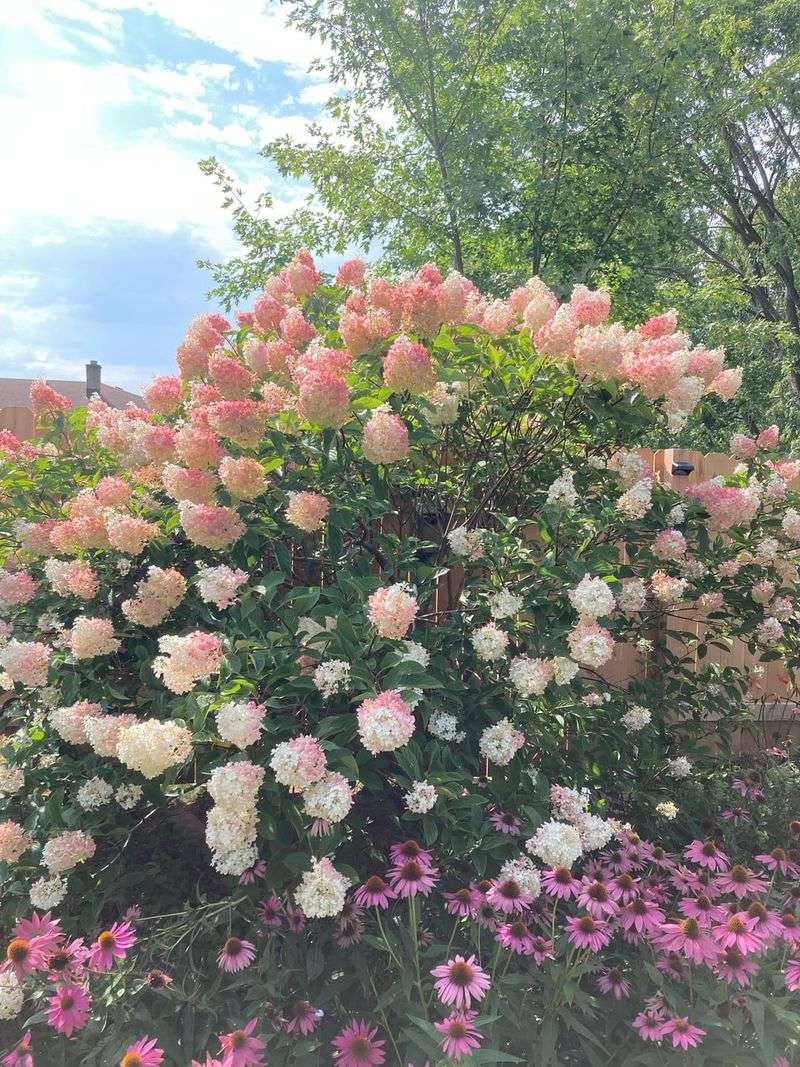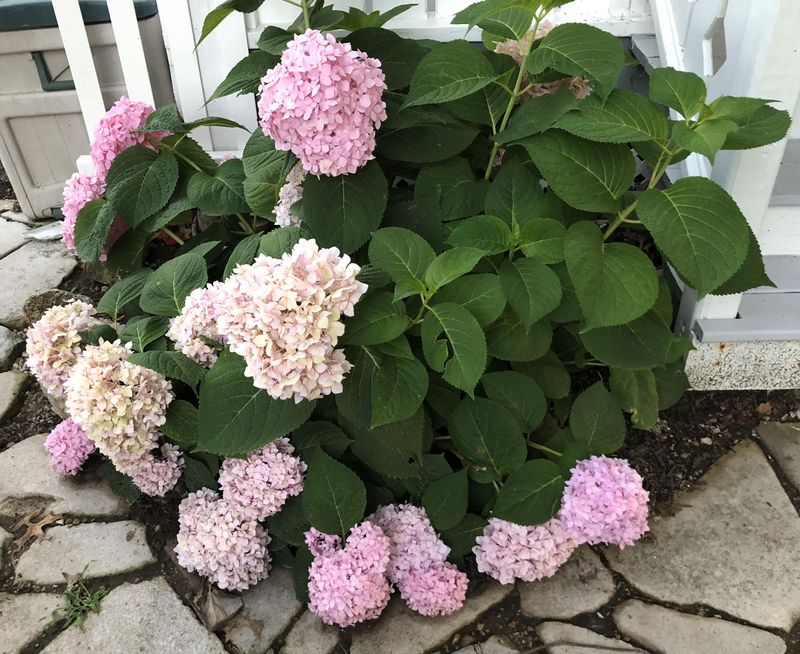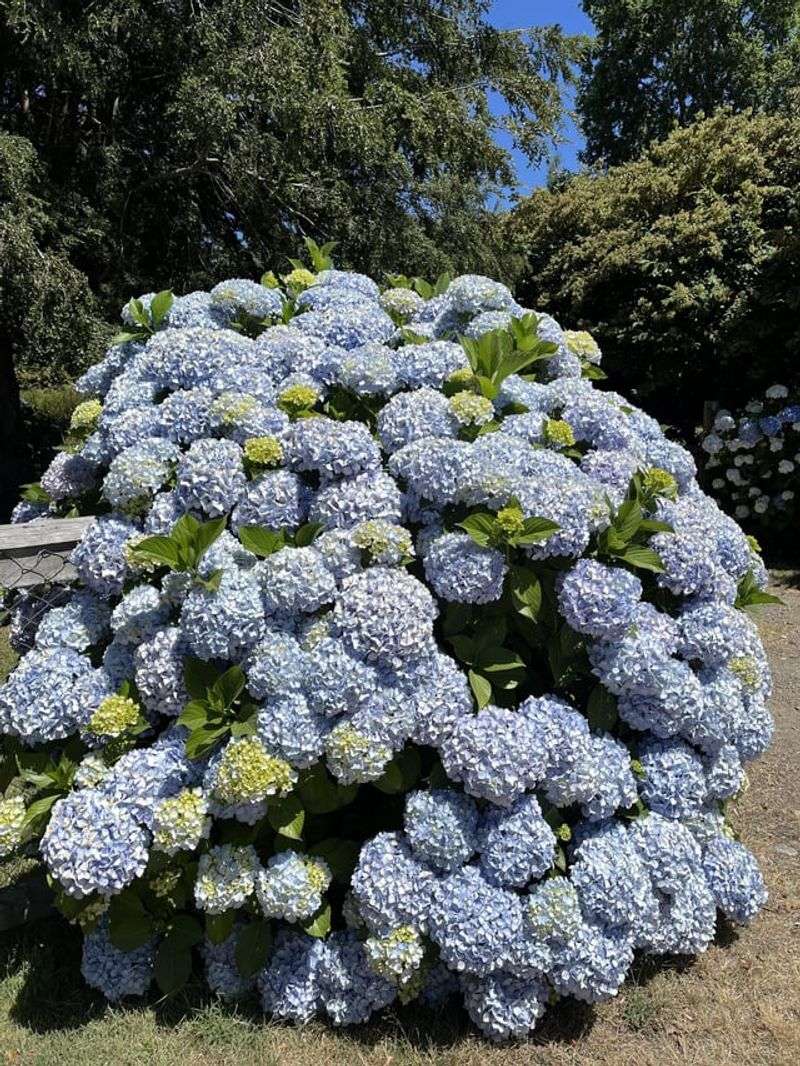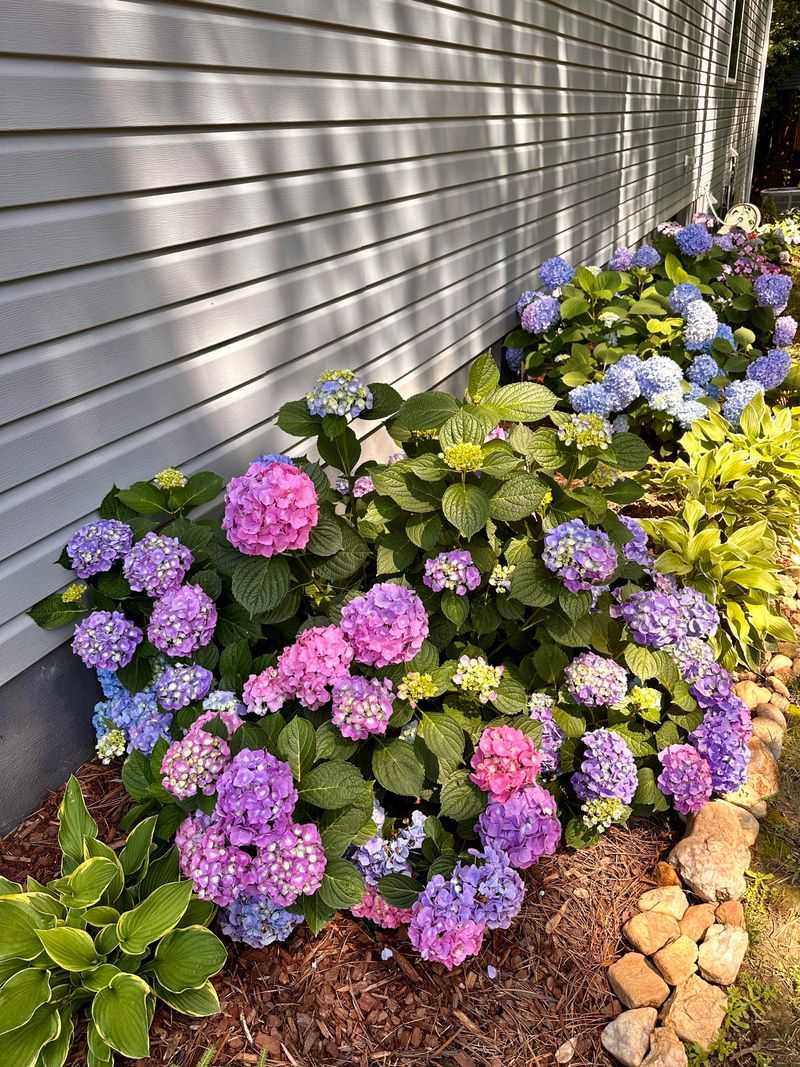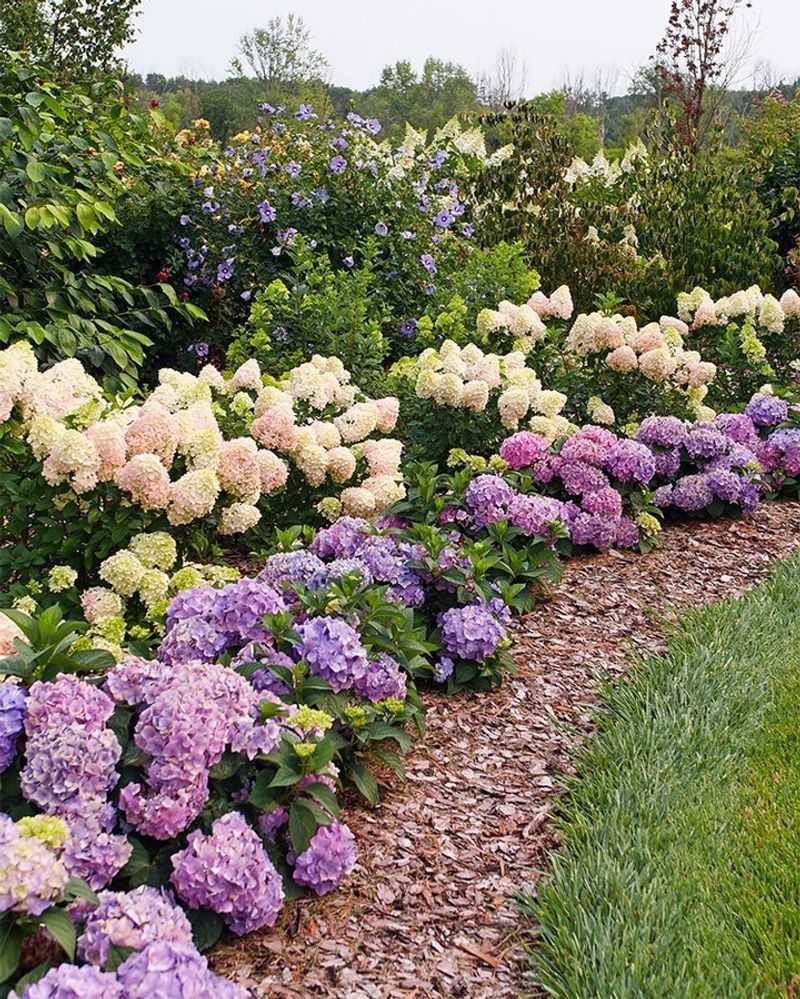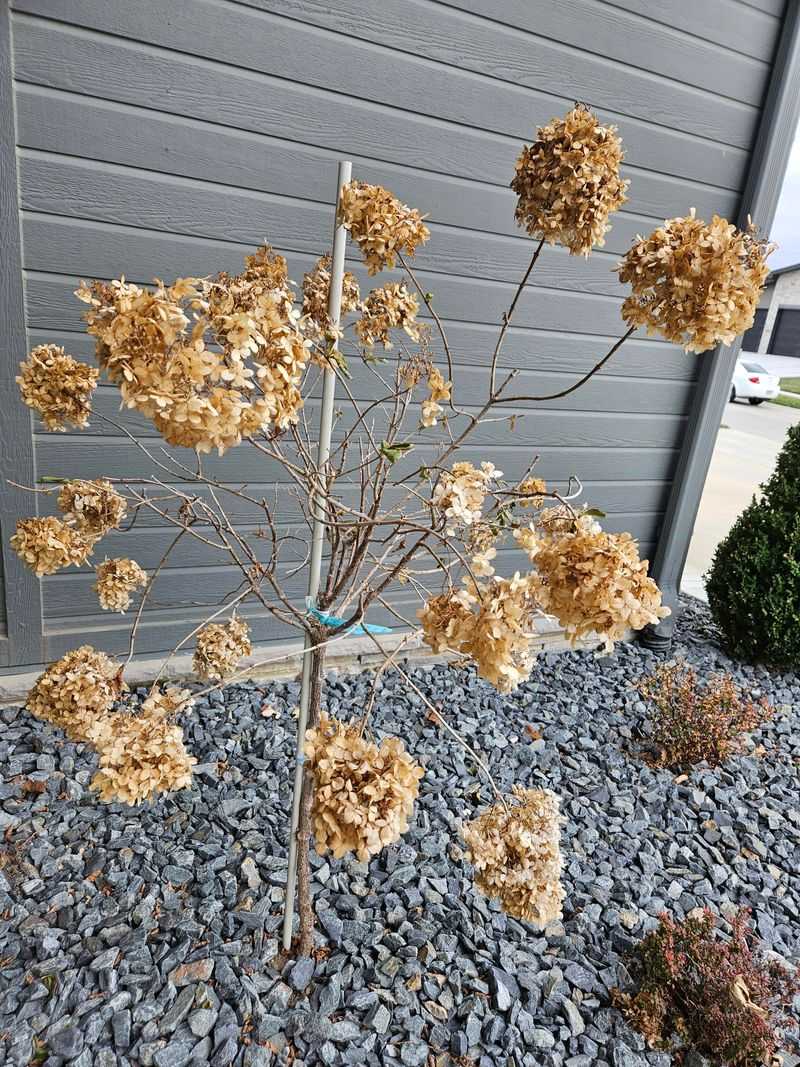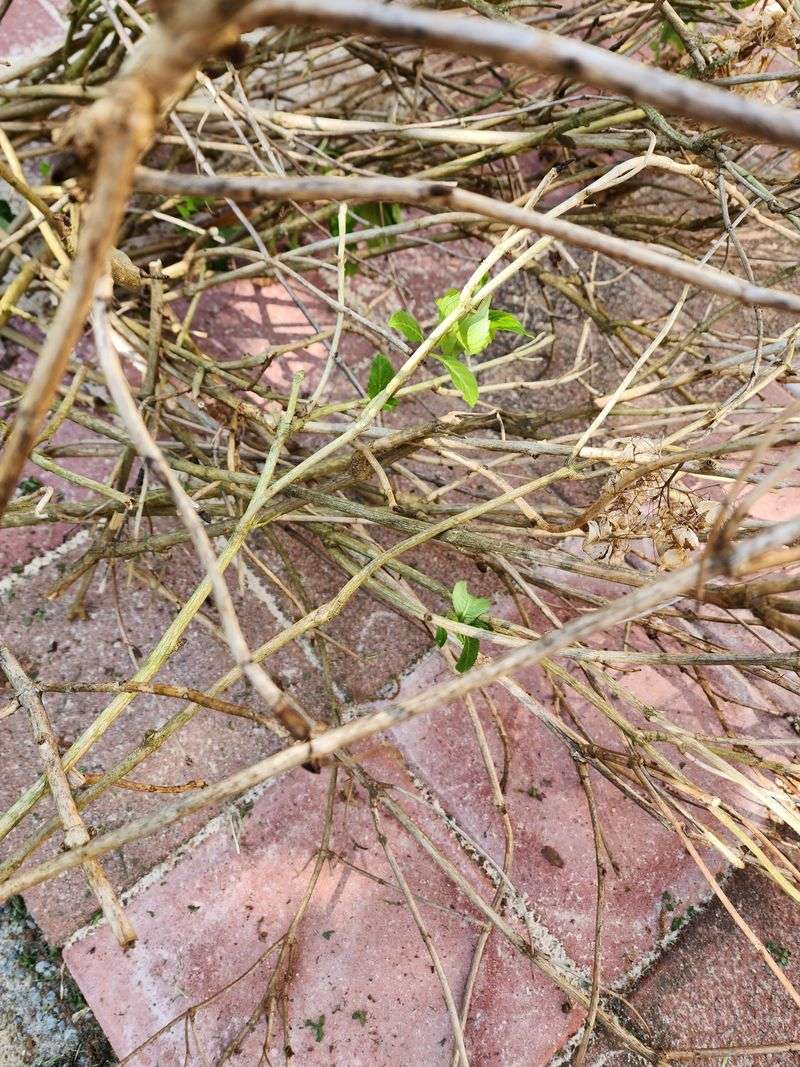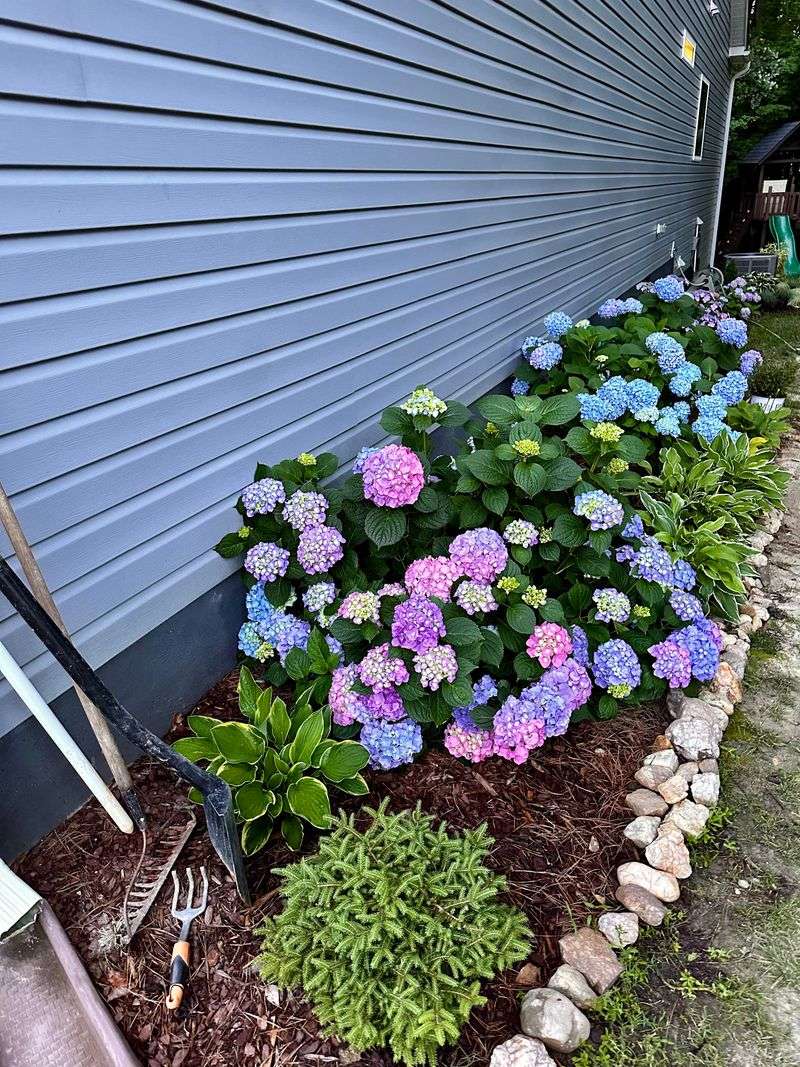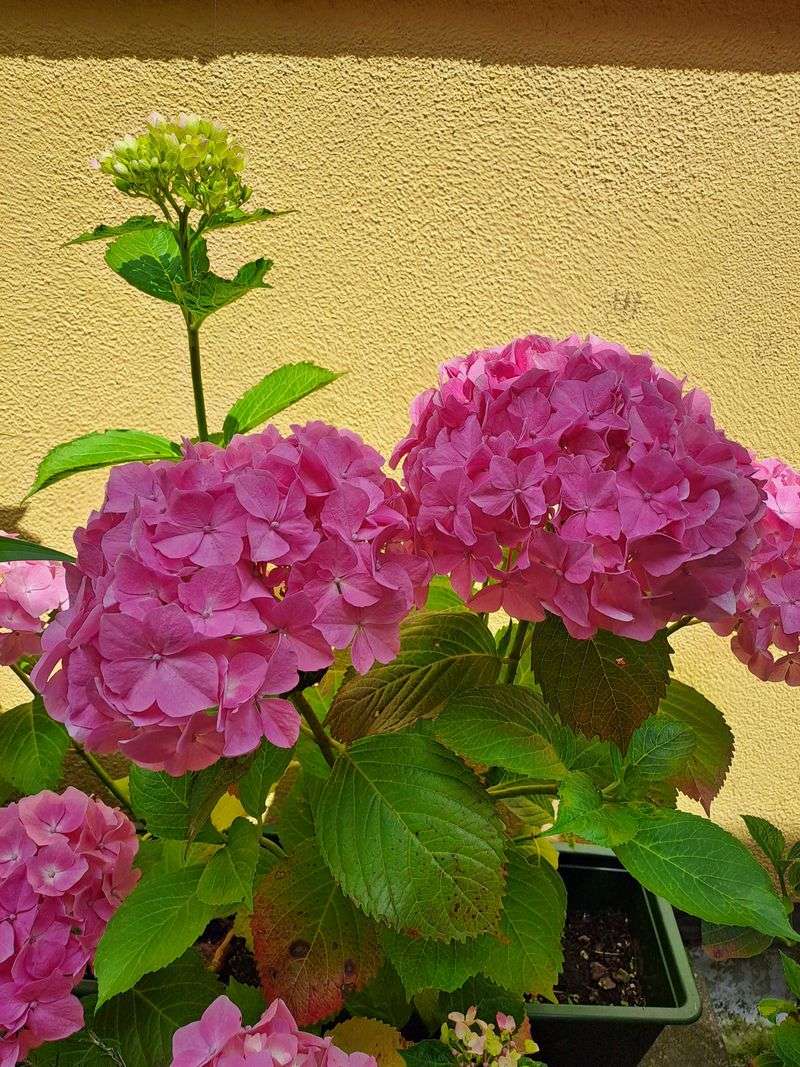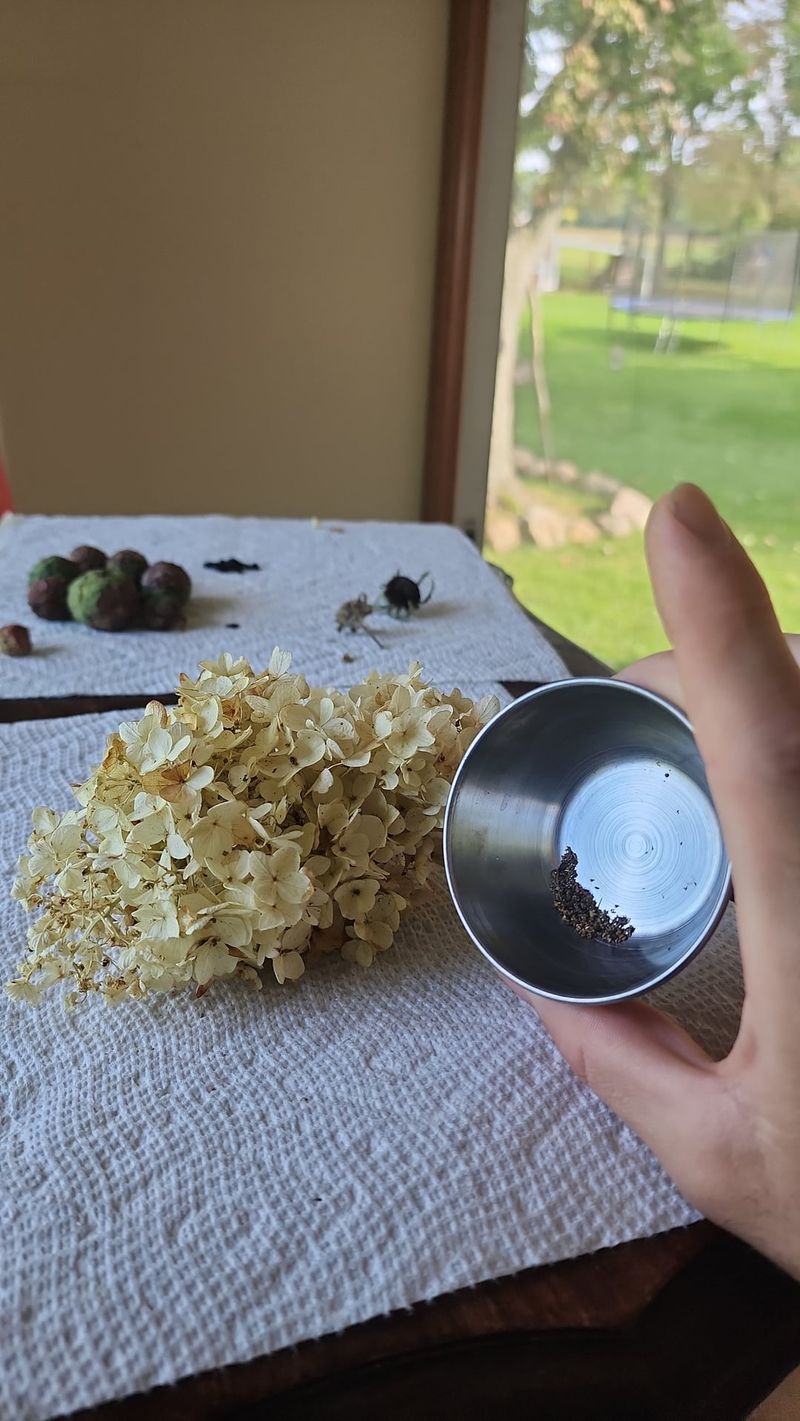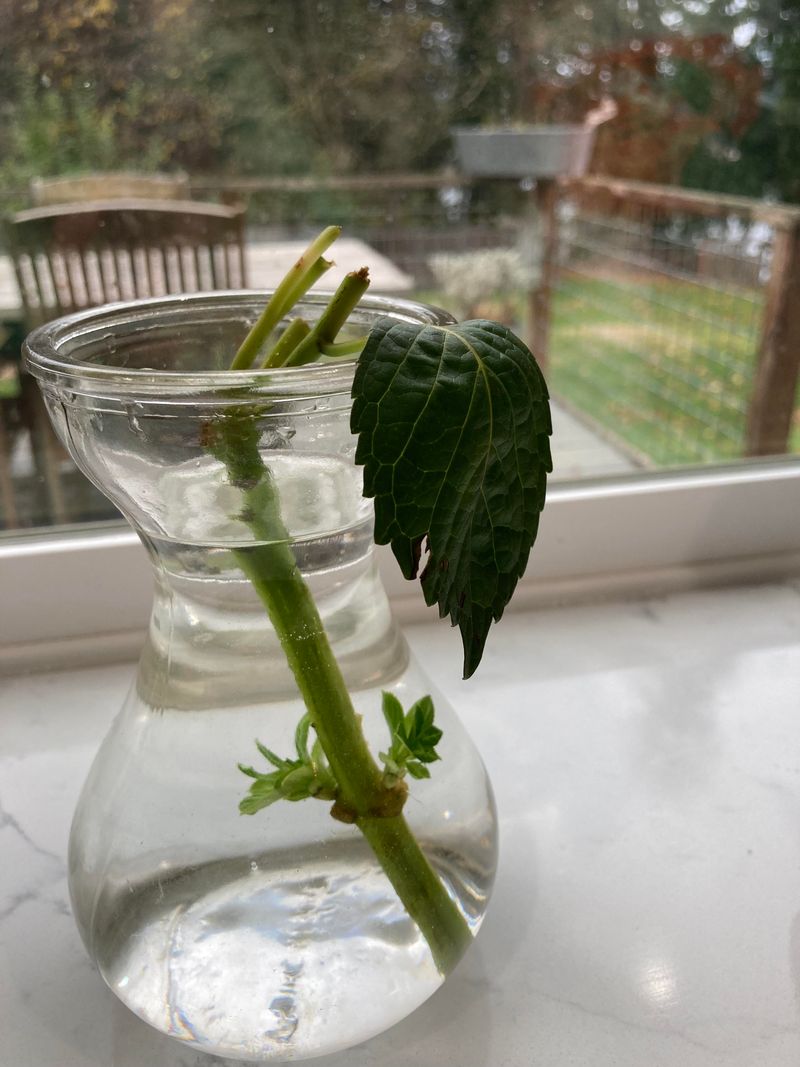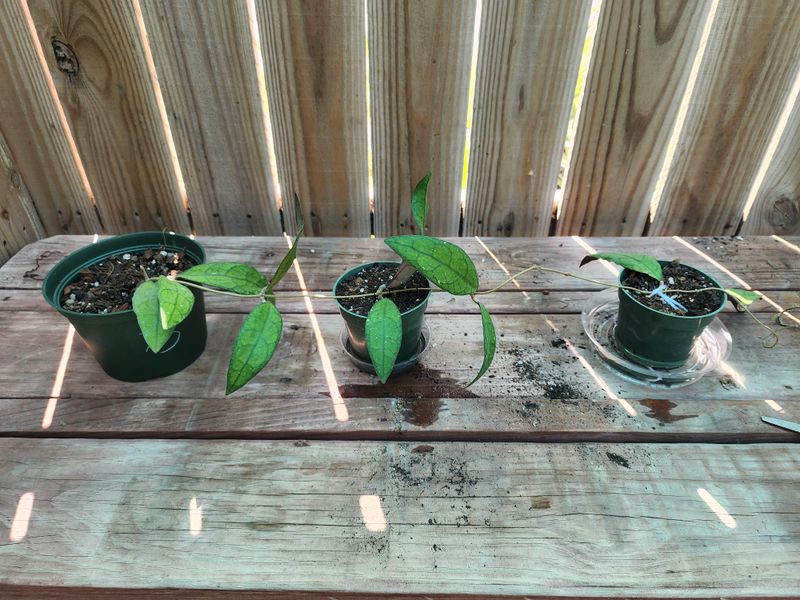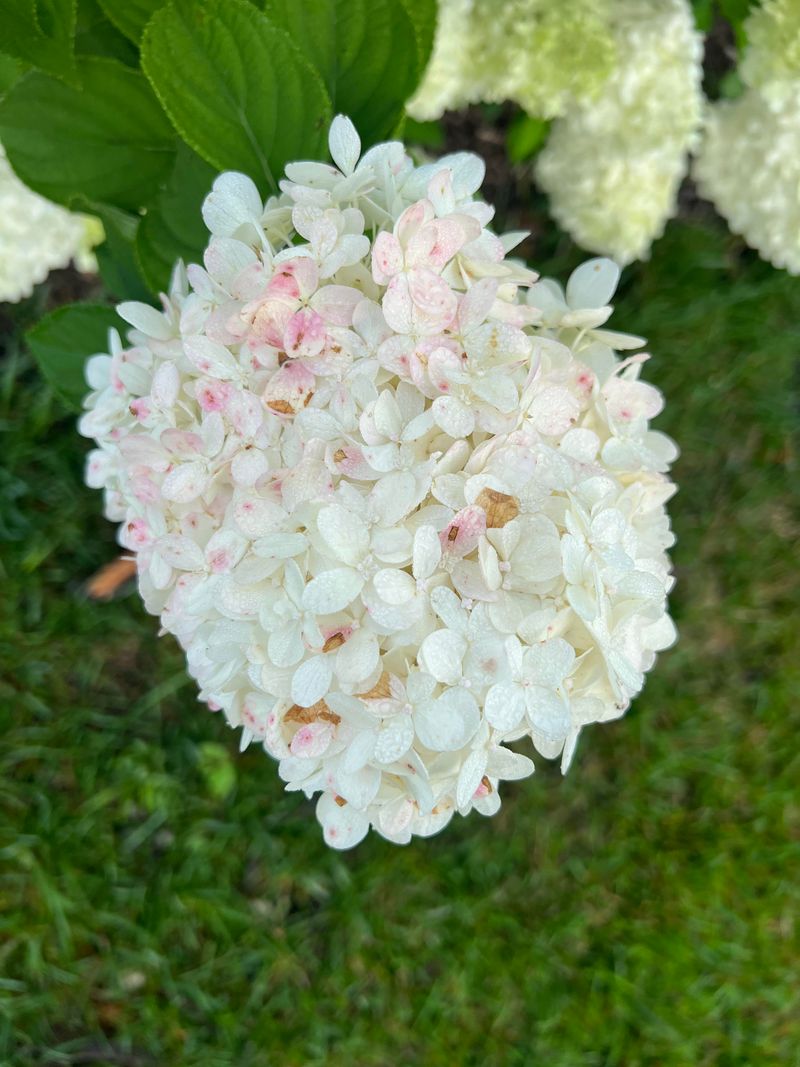No scissors, no stress—just gorgeous hydrangeas multiplying like magic. I used to think you had to snip and clip to get more plants, but these 15 no-cut tricks proved me wrong.
They’re gentle, simple, and perfect if you’re a little nervous about pruning. Before you know it, your garden will be overflowing with lush, full blooms.
Let’s grow more beauty the easy way.
1. Ground Layering
Mother Nature’s favorite propagation method requires almost no work from you! Simply bend a flexible low branch until it touches the soil, then secure it with a garden pin or small rock. The branch will develop roots where it contacts the earth.
After several months, you’ll notice new growth emerging from this connection point. Once established (usually takes 6-12 months), you can separate this new plant from the mother hydrangea and transplant it elsewhere in your garden.
2. Air Layering
This method works wonderfully when ground contact isn’t possible. Wrap damp sphagnum moss around a section of stem, then cover with plastic wrap. Secure both ends with twist ties or string to create a humid environment.
The constant moisture encourages roots to form inside your moss bundle. After 2-3 months, check for white roots through the plastic. Once you see a good root system, cut below the rooted area and pot up your new hydrangea baby!
3. Division
Perfect for established hydrangeas that have grown quite large! Wait until early spring or fall when plants are dormant. Carefully dig around the entire plant, preserving as much of the root system as possible.
Gently lift the whole plant and naturally separate it where you see distinct clumps forming. Each division should have both roots and stems attached. Replant these divisions promptly, water thoroughly, and watch your hydrangea collection multiply before your eyes.
4. Trench Layering
Got a hydrangea with long, flexible branches? Dig a shallow trench near your plant, about 2-3 inches deep. Lay a branch along this trench while keeping it attached to the mother plant. Cover with soil, leaving just the tip exposed.
Water regularly and wait patiently. Over time, roots will form at multiple points along the buried branch. After several months, you can cut between these rooted sections and end up with several new plants from just one branch!
5. Mound Layering
Brilliant for hydrangeas with multiple stems growing from the base! In early spring, cut back the plant to about 1-2 inches from ground level. Cover the remaining stumps with a generous mound of loose, rich soil.
New shoots will emerge and form roots where they contact the soil in your mound. By fall, carefully remove the soil to reveal these rooted shoots. Gently separate them from the parent plant and pot them up as brand new hydrangeas!
6. Tip Layering
Effortless and highly effective for hydrangeas with arching branches! Simply bend the tip of a flexible branch down to touch the soil surface. Dig a small hole, place the tip inside, and cover with soil, leaving the last few inches exposed.
Secure with a garden pin if needed to keep it in place. The buried tip will develop roots while still receiving nutrients from the parent plant. After roots establish, sever the connection and transplant your new hydrangea!
7. Natural Suckers
Some hydrangea varieties naturally produce suckers – small shoots that emerge from the ground around the main plant. These are basically free plants waiting to be harvested! Look for these shoots growing a few inches away from your hydrangea’s main stem.
Carefully dig around the sucker to expose where it connects to the parent plant. Once you’ve verified it has its own roots, sever the connection and transplant. These clones will grow into exact replicas of your original hydrangea!
8. Crown Division
Similar to regular division but focused specifically on the crown. In early spring, dig up your hydrangea and rinse off the roots to get a clear view of the crown – the area where stems meet roots.
Look for natural separation points in the crown structure. Using your hands, gently pull these sections apart, ensuring each division has both crown tissue and roots attached. Replant immediately and keep well-watered until established. Your divisions will quickly grow into full-sized plants!
9. Soil Mounding
A fantastic technique for hydrangeas with multiple stems! Instead of cutting the plant back, simply pile 4-6 inches of rich compost or soil around the base of your hydrangea, covering the lower portions of all stems.
Keep this mound consistently moist throughout the growing season. By fall, you’ll find roots have formed where the stems contact the soil. Carefully remove the mound, cut these newly rooted stems, and pot them up as independent plants!
10. Container Division
Perfect for potted hydrangeas! Remove your plant from its container and gently tease apart the root ball with your fingers. Look for natural divisions where the plant can be separated into multiple sections.
Each division should have healthy roots and at least one stem with growth buds. Pot these divisions into separate containers with fresh potting mix. Water thoroughly and place in dappled shade until established. Container division gives you instant new plants without any waiting!
11. Natural Seed Propagation
Let nature do the work! Allow your hydrangea flowers to dry on the plant until they form seed heads. These will eventually release tiny seeds that can self-sow around your garden.
To increase success, collect these seed heads when they turn brown and sprinkle the seeds in prepared areas of your garden. While seedlings won’t be identical to the parent plant, they’ll still produce beautiful hydrangeas with interesting variations in color and form!
12. Root Encouragement
Encourage your hydrangea to develop more roots without cutting anything! Apply a rooting hormone powder to the lower portions of stems where they meet the soil. Then mound additional soil around these treated areas.
The hormone stimulates root development right through the bark. Keep this area consistently moist. After several months, you’ll have stems with their own root systems that can be carefully separated from the main plant and replanted elsewhere!
13. Serpentine Layering
Got a long, flexible hydrangea branch? This method lets you create multiple plants from just one stem! Dig a series of shallow holes along the length of the branch. Weave the branch up and down, burying sections in each hole while leaving other parts exposed.
Secure with garden pins where needed and keep well-watered. Roots will form at each buried section. Once established, cut between these rooted points and voilà – you’ve turned one branch into several new hydrangeas!
14. Stool Layering
Start by cutting your hydrangea back to just a few inches above ground level in early spring. This seemingly drastic move stimulates lots of new shoots to emerge from the base.
As these new shoots grow, gradually add soil around them, covering the lower portions. Keep adding soil throughout the season until you’ve built up a 6-inch mound. By fall, these shoots will have developed roots where they contact the soil and can be separated into individual plants!
15. Natural Runners
Some hydrangea varieties produce underground runners – horizontal stems that grow beneath the soil surface and pop up as new plants nearby. These are essentially free hydrangeas already growing in your garden!
Carefully dig around these runner plants to expose their connection to the parent. Once you verify they have their own roots, sever the connecting runner and transplant them wherever you like. These genetic clones will produce identical flowers to your original plant!

